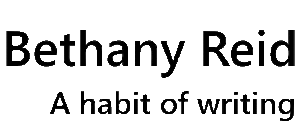In the Company of Writers
/0 Comments/in Poetry, Reading /by Bethany I have had the privilege over the past few weeks of hanging out with some very cool writers. Joannie Stangeland for one, Katie Tynan (of It’s About Time) for another. Last week I was one of the featured readers for Rose Alley Press‘s 20th Anniversary reading series, and I want to take a moment to recommend this local press, owned and operated by David D. Horowitz, and its books (particularly as it is getting to be that gift-giving time of year).
I have had the privilege over the past few weeks of hanging out with some very cool writers. Joannie Stangeland for one, Katie Tynan (of It’s About Time) for another. Last week I was one of the featured readers for Rose Alley Press‘s 20th Anniversary reading series, and I want to take a moment to recommend this local press, owned and operated by David D. Horowitz, and its books (particularly as it is getting to be that gift-giving time of year).
The novelist Jane Hamilton tells a story about getting caught reading George Eliot’s Middlemarch in a school hallway while waiting for a child. The other mother who spied her said something that Jane translated to “How Quaint.” With an edge of outrage in her voice, she added, “as if I were tatting lace!”
I thought of that story because I read Middlemarch, the first time, while taking a class with Professor William Dunlop, whose poetry book, Caruso for the Children and Other Poems, is a Rose Alley Press book.
One reason to go to readings is to connect with like-minded people who read the same sort of books that I do. That you do. Don’t you?
Get some sleep
/5 Comments/in Uncategorized /by Bethany Like everyone else I know, I’ve been obsessing about the headlines, about France, about Syria. Closer to home, about homelessness. I came across this poem as I was sorting through papers in my writing cabin, and I thought it was good advice for such times. “Straighten up your room before you save the world. Then save the world.”
Like everyone else I know, I’ve been obsessing about the headlines, about France, about Syria. Closer to home, about homelessness. I came across this poem as I was sorting through papers in my writing cabin, and I thought it was good advice for such times. “Straighten up your room before you save the world. Then save the world.”
I think this is only an excerpt of a poem by Ron Padgett. I first saw it on Joan Chittister’s Benetvision website.
Get some sleep.
Eat an orange every morning.
Be friendly, it will make you happy.
Hope for everything. Expect nothing.
Take care of things close to home first. Straighten up your room
before you save the world. Then save the world.
Be nice to people before they have a chance to behave badly.
Don’t stay angry about anything for more than a week, but don’t
forget what made you angry. Hold your anger out at arm’s length
and look at it, as if it were a glass ball. Then add it to your glass
ball collection.
Wear comfortable shoes.
Do not spend too much time with large groups of people.
Plan your day so you never have to rush.
Show your appreciation to people who do things for you, even if
you have paid them, even if they do favors you don’t want.
After dinner, wash the dishes.
Calm down.
Don’t expect your children to love you, so they can, if they want to.
Don’t be too self-critical or too self-congratulatory.
Don’t think that progress exists. It doesn’t.
Imagine what you would like to see happen, and then don’t do
anything to make it impossible.
Forgive your country every once in a while. If that is not
possible, go to another one.
If you feel tired, rest.
Don’t be depressed about growing older. It will make you feel
even older. Which is depressing.
Do one thing at a time.
If you burn your finger, put ice on it immediately. If you bang
your finger with a hammer, hold your hand in the air for 20
minutes, you will be surprised by the curative powers of ice and
gravity.
Do not inhale smoke.
Take a deep breath.
Do not smart off to a policeman.
Be good.
Be honest with yourself, diplomatic with others.
Do not go crazy a lot. It’s a waste of time.
Drink plenty of water. When asked what you would like to
drink, say, “Water, please.”
Take out the trash.
Love life.
Poem four: Prayer before birth – by Louis MacNeice
/0 Comments/in Uncategorized /by BethanyVideo post.

